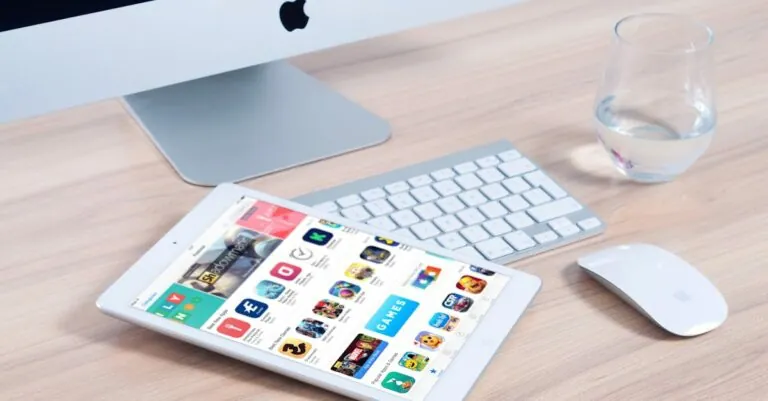In a world where apps multiply like rabbits, keeping your Android phone clutter-free is essential. Whether it’s that fitness app you swore you’d use or the game that promised to be addictive but turned out to be a snooze fest, it’s time to bid them farewell. After all, who needs digital baggage weighing down their device?
Table of Contents
ToggleOverview Of Deleting Apps On Android Phone
Deleting apps on an Android phone helps boost performance and frees up storage space. Users often encounter numerous applications, making it essential to regularly assess what’s useful. Determining which apps to remove involves evaluating how often they’re used and their effectiveness.
Several methods exist for removing apps. One straightforward approach utilizes the app drawer. Opening the app drawer reveals all installed applications, allowing users to assess their options. Selecting an app typically opens a menu with an uninstall option.
Another effective method involves the settings menu. Accessing the settings provides a comprehensive overview of all installed apps. Navigating to the ‘Apps’ or ‘Application Manager’ section helps users identify and delete unwanted applications. This method often displays detailed information such as storage used or permissions granted, aiding in decision-making.
Users can also delete apps via the home screen. Long-pressing an app icon usually reveals an option to uninstall. Dragging the app to an ‘Uninstall’ prompt confirms the deletion, providing a quick and intuitive way to manage applications.
Keeping the device clutter-free enhances user experience. Regularly monitoring app usage prevents unnecessary digital accumulation. Prioritizing essential applications ensures optimal performance, enabling users to enjoy their devices fully. Checking for software updates and removing outdated apps also contributes to seamless functionality.
For those looking to streamline their Android experience, understanding how to delete apps effectively can make a significant difference.
Methods To Delete Apps
Knowing how to delete apps easily can enhance the Android experience. Here are two common methods.
Deleting Through The Home Screen
To delete an app from the home screen, locate the app icon. Tap and hold the icon until a menu appears. Select “Uninstall”, and then confirm the action. This method provides a quick way to remove apps without navigating through menus. Users often prefer this for its simplicity and efficiency. It streamlines the process and saves time, especially when dealing with multiple apps.
Deleting Through The Settings Menu
Accessing the settings menu allows for a more detailed app management approach. Open the settings app, then select “Apps” or “Applications”. Scroll through the list to find the app to delete. Tap on the app, followed by the “Uninstall” option. Confirmation completes the removal process. This method means users can manage app permissions and storage options simultaneously. It offers a comprehensive view of all installed applications for better organization.
Additional Options
Users can explore additional options for deleting apps on their Android phones. Two notable methods include using the Google Play Store and utilizing third-party app managers.
Using The Google Play Store
The Google Play Store offers a straightforward way to uninstall apps. Access the store and tap on the profile icon in the top right corner. Select “Manage apps & device,” then choose the “Manage” tab to see a complete list of installed apps. Users can then tap on the app they want to delete and select “Uninstall” from the app’s info page. This option not only allows for uninstallation but also provides insights into storage details and app permissions, ensuring effective app management.
Utilizing Third-Party App Managers
Third-party app managers provide an alternative approach for app deletion. Various options are available, some featuring additional functionalities like batch uninstallation and cleanup tools. Users can download a trusted app manager from the Google Play Store, then launch it to view installed applications. These managers often present user-friendly interfaces, making it easier to select multiple apps for uninstallation at once. By leveraging these tools, users can streamline their processes, managing storage and improving device performance efficiently.
Tips For Managing Apps
Managing apps effectively enhances the overall smartphone experience. Users can streamline their devices by organizing and regularly checking app usage and storage.
Organizing Apps For Easy Access
Arranging apps into folders simplifies navigation. Users can create categories such as “Social,” “Games,” or “Productivity” to quickly find what they need. Placing frequently used apps on the home screen improves access and efficiency. Grouping similar apps also makes the interface cleaner, reducing clutter. Regularly evaluating app organization can ensure it continues to meet personal needs as interests change.
Checking Storage Space
Monitoring storage space prevents performance issues. Users can check remaining storage via the settings menu under “Storage.” This section displays how much space apps occupy and helps identify those taking up excessive storage. Cleaning up unused apps leads to improved performance and speeds up device operation. Regular assessments keep storage space optimal, allowing room for essential apps and updates.
Maintaining a streamlined Android phone is essential for optimal performance. Regularly deleting unused apps not only frees up storage space but also enhances the overall user experience. By utilizing the various methods outlined in the article users can efficiently manage their applications and keep their devices clutter-free.
Taking the time to assess app usage and organization can lead to a more enjoyable smartphone experience. Embracing these practices ensures that only the most relevant and helpful apps remain, allowing for smoother navigation and improved functionality. Prioritizing essential applications will ultimately lead to a more efficient and enjoyable Android experience.



